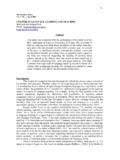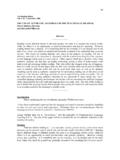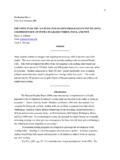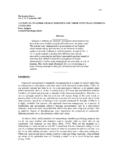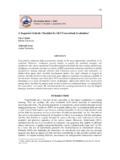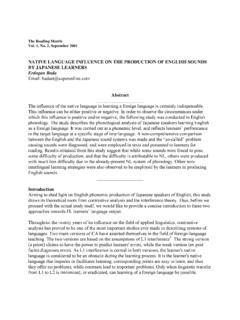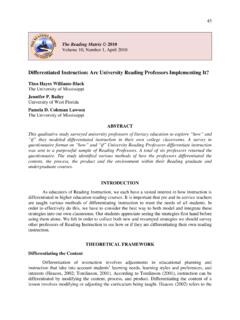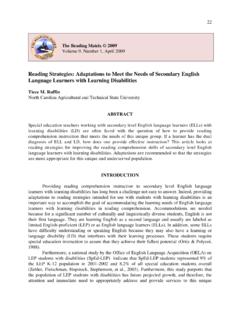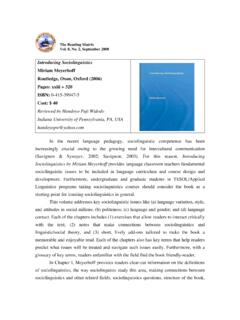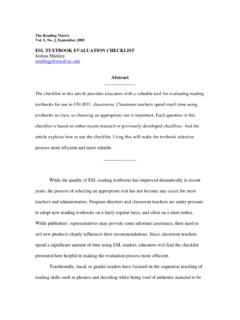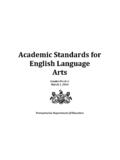Transcription of TEACHING READING COMPREHENSION TO …
1 143 The READING Matrix Vol. 5, No. 2, September 2005 TEACHING READING COMPREHENSION TO ESL/EFL LEARNERS Hesham Suleiman Alyousef Abstract _____ Research conducted over the last three decades has changed our view of READING as a mere process of decoding. As Carrell and Eisterhold state EFL/ESL READING theory has been influenced during the past decades by Goodman (from the mid- to late 1970s) who views READING as a guessing game in which the reader reconstructs, as best as he can, a message which has been encoded by a writer. (1983, p. 554) As Grabe describes Godman s perception of READING which is seen as an .. active process of comprehending [where] students need to be taught strategies to read more efficiently (e. g., guess from context, define expectations, make inferences about the text, skim ahead to fill in the context, etc.)
2 (1991, p. 377) Paran opposes Godman s view of READING as an activity involving constant guesses that are later rejected or confirmed. This means that one does not read all the sentences in the same way, but one relies on a number of words or cues - to get an idea of what kind of sentence ( an explanation) is likely to follow (1996, ). Zhang (1993) explains that Afflarbach compares COMPREHENSION process to hypothesis testing (or draft-and-revision) where the reader arrives at the main idea after revising the initial hypothesis, provided the reader has adequate background knowledge. Moreover, research and practice in TESOL was greatly influenced by Stephen Krashen s hypotheses on language acquisition, and particularly the effect of the Schema Theory on studies dealing with READING COMPREHENSION .
3 Today, a growing body of empirical research attests to the role of schemata in EFL/ESL READING COMPREHENSION . Most of the research was made on READING COMPREHENSION of the first language. However, insights were adapted to suit SL READING COMPREHENSION studies. Most important of all, specific attention is given to interactive approaches to READING , which argue that READING COMPREHENSION is a combination of identification and interpretation skills. Grabe (1991) lists the five most important areas of current research which are still prominent: schema theory, language skills and automaticity, vocabulary development, COMPREHENSION strategy training, and READING -writing relations (p. 375) Automaticity may be defined as occurring when the reader is unaware of the process, not consciously controlling the process, and using little processing capacity.
4 (ibid, p. 379-380) In this paper, I will discuss briefly the tenets of READING COMPREHENSION , the cognitive tasks involved in READING as well as the various activities teachers use in TEACHING READING COMPREHENSION . Current research believes that lack of automaticity in lower-level processing ( automatic lexical access through bottom-up process) leads to poor-skilled READING . Consequently, most current versions of interactive approaches to READING have taken a strong 144bottom-up orientation to the processing of lower-level linguistic structure through extensive research of eye movement. Researchers believe that most words are recognized before higher-level (non-automatic) context information can be used to influence lexical access.
5 (ibid: 385) _____ Definition of READING READING can be seen as an interactive process between a reader and a text which leads to automaticity or ( READING fluency). In this process, the reader interacts dynamically with the text as he/she tries to elicit the meaning and where various kinds of knowledge are being used: linguistic or systemic knowledge (through bottom-up processing) as well as schematic knowledge (through top-down processing). Since READING is a complex process, Grabe argues that many researchers attempt to understand and explain the fluent READING process by analyzing the process into a set of component skills (1991, p. 379) in READING ; consequently researchers proposed at least six general component skills and knowledge areas: 1.
6 Automatic recognition skills 2. Vocabulary and structural knowledge 3. Formal discourse structure knowledge 4. Content/world background knowledge 5. Synthesis and evaluation skills/strategies 6. Metacognitive knowledge and skills monitoring The Cognitive Tasks Involved in READING Carrell and Eisterhold outline the processes involved in this interactive process where both bottom-up and top-down processing occur simultaneously at all levels: The data that are needed to instantiate, or fill out, the schemata become available through bottom-up processing; top-down processing facilitates their assimilation if they are anticipated by or consistent with the listener/reader s conceptual expectations.
7 Bottom-up processing ensures that the listeners/ readers will be sensitive to information that is novel or that does not fit their ongoing hypotheses about the content or structure of the text; top-down processing helps the listeners/readers to resolve ambiguities or to select between alternative possible interpretations of the incoming data. (1983, p. 557) Researchers, however, are still investigating the ways through which these two kinds of knowledge interact with each other during the process of READING . Jeanne S. Chall, an advocate of the phonics approach, is known for her continued struggle with the war between those advocating phonics instruction [bottom-up processing] and those advocating whole language [top-down processing], which relies in part on instruction using sight words.
8 (Abraham, 2002, p. 1) Chall argues that a systematic direct TEACHING of decoding should be part of initial READING instruction (Orasanu, 1986, p. 114). Other bottom-up theorists included Gough (1972), LaBerge 145and Samuels (1974). Carrell and Eisterhold (1983) state that accessing appropriate content schemata depends initially on the graphic display which must be somehow reconstructed by the reader as meaningful language (p. 562). Therefore, readers can improve READING COMPREHENSION by expanding their vocabularies and gaining greater control over complex syntactic structures. Contemporary insights believe that grammar facilitates learning and its presentations to learners should be through contextualization of linguistic forms in situations of natural use (Hedge, 2003, p.)
9 159) Iversen & Tunmer list the five stages for developing word recognition which were proposed by Spencer and Hay: i) glance and guess; ii) sophisticated guessing; iii) simple phoneme-to-grapheme correspondences ( letter sounding out); iv) recognition of analogy (recognition of word patterns within a word, such as and in sand); v) later word recognition, involving compound words and syllabification ( recognising playground as play plus ground). (Spencer & Hay, 1998, p. 223) When a child is confronted with an unfamiliar word, he/she is first encouraged to look into the word for familiar letter and spelling patterns, and then to use context as back up support to confirm hypotheses as to what that word might be, make is m plus ake, as cake is c plus ake.
10 Moorman and Ram (1994, p. 646) propose their functional theory which aims at describing the cognitive tasks involved in READING through the ISAAC (Integrated Story Analysis and Creativity) system. Types of READING Extensive READING There have been conflicting definitions of the term extensive READING . (Hedge, 2003, p. 202) Some use it to refer to describe skimming and scanning activities, others associate it to quantity of material. Hafiz and Tudor state that: the pedagogical value attributed to extensive READING is based on the assumption that exposing learners to large quantities of meaningful and interesting L2 material will, in the long run, produce a beneficial effect on the learners command of the L2.
